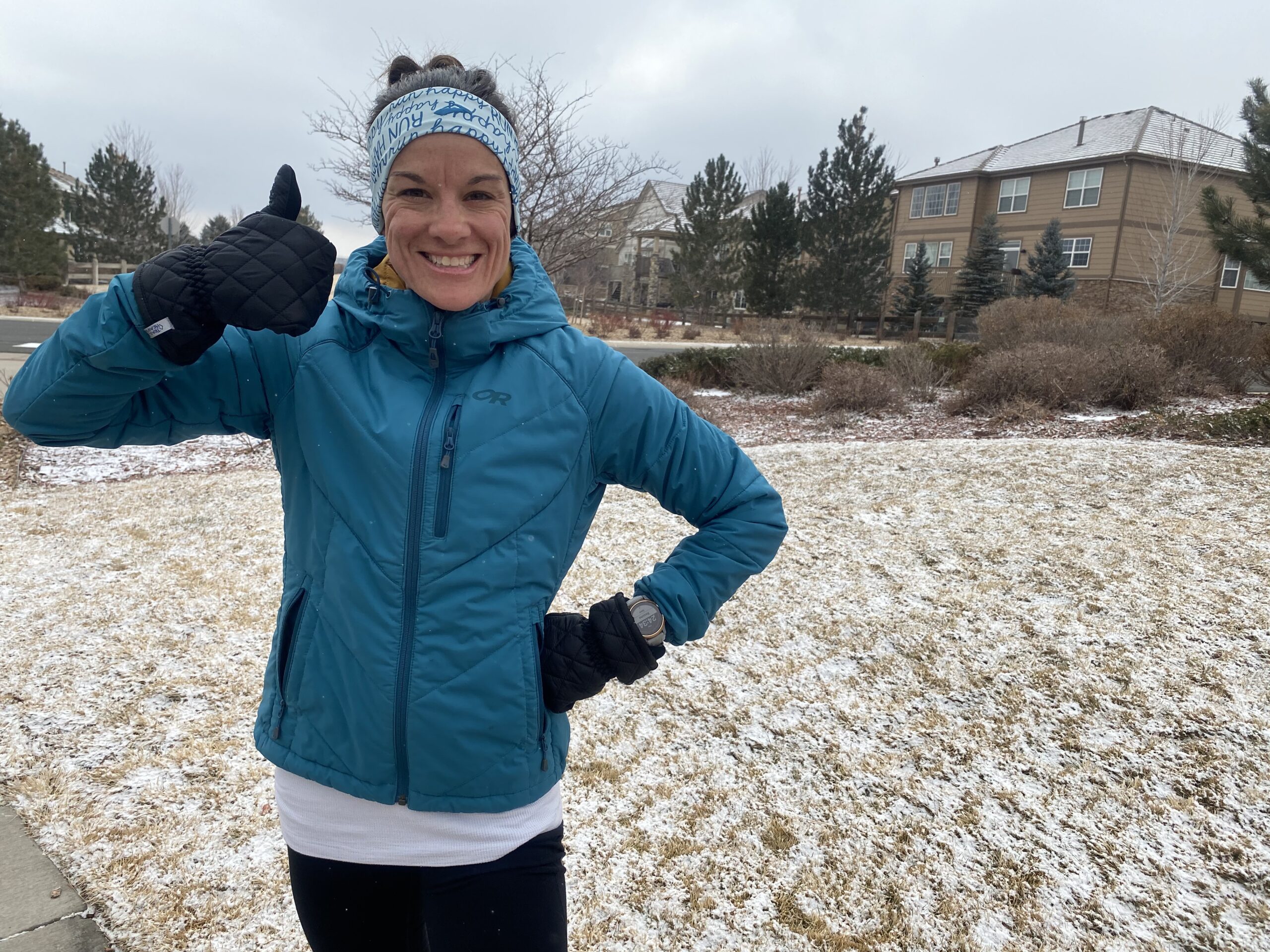As a runner, your thought process is likely, “the harder I train, the faster I’ll get.” This seems as if it would make sense, and of course, you know you’re working hard. We applaud your determination and focus! But as you go out every day and pound the pavement, quite literally willing your legs to go faster and faster every time, the running fatigue is bound to set in sooner rather than later. So, what gives? You’ve been taught that tirelessly pushing toward your goals and working hard is what’s going to help you achieve more. But if you don’t give yourself a break, you’re going to get burnt out.
So, how can you overcome this running fatigue? Depending on what you’re training for (such as a marathon, for example), some running fatigue is completely normal and actually helps you become a stronger runner. But if you’re not seeing progress, chances are you’re pushing too hard. Overcoming running fatigue often comes from becoming more patient in pursuit of your running goals as well as doing the proper “training” that comes outside of running.
Read on to find out how you can tell the difference between helpful fatigue and when it’s become too much. We’ll also go over what we recommend to overcome running fatigue so you can be your strongest running self including:
- running more easy miles
- getting enough sleep
- utilizing proper nutrition
- the role of stretching, foam rolling and strength training
Let’s begin by understanding what is considered “normal” running fatigue as well as the signs that you may have pushed too hard.
Running Fatigue: What’s Normal and What’s Not
I cannot stress enough that running fatigue is not always bad. In fact, if it’s truly just “fatigue” and you’re able to run through it without pain, it’s often making you a stronger runner. That’s not to say you want to always feel this way. Let’s take a look first at why running fatigue can be a positive thing.

When Running Fatigue is Positive
When you are training for a race, whether it be a 5k or a marathon, creating something called “cumulative fatigue” is a good thing. I explain it in-depth in my article, “Marathon Training Cumulative Fatigue: Why It‘s Good to Run on Tired Legs” and here I’ll give you the gist.
Basically, instead of allowing your body to completely recover before you run again, you run on tired legs. You’re actually doing your body a disservice if you’re always running on fresh legs. Why is that?
During a race, your body needs to know what it feels like to keep going when it gets uncomfortable. In an endurance race, especially, your legs will get extremely fatigued as you push on after mile 20. But even in a 5k, all that power your muscles require will leave you feeling flat toward the end if your legs don’t know how to work through fatigue and discomfort.
It is recommended that you run on the days when your legs are telling you “no.” The key is to run easy on these days. When I say “easy” that’s about 2-3 minutes per mile slower than your 5k pace. I’m not talking about running through sickness or pain; running fatigue usually comes in the form of a tired body and “dead” legs – and you’d be surprised how many miles you can make it through feeling this way if you just slow down. We’ll talk more about that in a bit.
When Running Fatigue is Not So Good
The thing is, you don’t want to be so fatigued that you’re never able to hit your paces when your training calls for speed. For example, if you find that you’re always missing the mark on your speed work days, you’re probably coming in too fatigued. Because if you’re never getting the speed paces in training, then you’re not developing your muscles in a way that will ultimately make you faster. Tired legs can definitely wreak havoc on your pace.
If this is happening over and over, you are very likely running too fast on your other days. Even too many moderate-paced miles, which I like to refer to as “junk miles” and go over in this article, will leave you feeling too fatigued. At the end of this article I’ll give you a glimpse into what a week of training can look like so that you can get the accumulated fatigue you need, but still be ready for your speed work days to hit your paces.
It’s important to remember that running fatigue does not mean you feel completely drained and exhausted. It may feel like tightness in different areas of your legs (which there is a solution for that we’ll talk about), but it is not associated with pain. If you’re feeling overwhelmingly tired or are experiencing pain when you run, it’s time to take a break and rest.
Otherwise, if you run several days a week, running fatigue is normal. It’s considered “healthy” fatigue and will make you stronger. But there are ways to get through it in order to be the strongest runner you can be.
Are you finding the need to pop pain relievers to get through a run? This could be a sign of over training. Read: Advil or Tylenol Before Running: Not as Harmless as You’d Think
Running More Easy Miles to Run Through “Healthy” Fatigue
Sometimes, you CAN have too much of a good thing. In this case, I’m talking about running fast too often.
This is probably the number one mistake new runners make. In fact, I did it for years. I used to be so proud of myself for running as fast as I could for every single run that I went on. I felt like I was getting a great workout every time that way. The problem was that I had plateaued in my race times. I was overworking my body, taking lots of rest days in between in order to be able to go hard and completely recover, and my paces weren’t really improving. When I started running marathons again in 2017, I finally realized how important running “easy” miles really was.
It took a very long time for this idea to take hold for me. It sounds counterintuitive that running lots of slow miles can actually help you get faster and achieve your goals. But, it works. I talk about it in-depth in my article, “Train Slower to Run a Faster Marathon.”
It’s widely accepted in the running world that about 80% of the miles you run should be at your easy pace. It’s often referred to as 80/20 training. Even the elites do this, as Runner’s World explains.
It’s important to remember that everyone’s easy pace is different. This is when it’s really important to listen to your body and pay attention to your rate of perceived exertion (RPE). Whereas a 9-10 is as fast as you can possibly go, your easy runs will fall around a 2-4 on the same scale. You should be able to easily have a conversation and breathe out of your nose.
If you’re finding that you simply cannot run 2 or more days in a row, chances are you need to slow down to overcome some of the running fatigue.
Getting Proper Sleep To Avoid Extra Fatigue
Another reason runners experience fatigue is due to a lack of recovery. That could either come in the form of doing a hard run instead of a recovery run as I just discussed. Or it could be that you need an extra rest day each week – though we did talk about how cumulative fatigue is actually good. So where does most of the recovery happen?
When you sleep.
The human body undergoes 4 – 5 stages of sleep. During the 3/4 stage is when the following occurs (according to the National Sleep Foundation):
- muscles relax
- blood supply to the muscles increases
- tissue growth and repair occurs
- the body’s energy is restored
- hormones necessary for muscle development are released
In our fast-paced world, we often equate too much sleep with laziness. But the truth is that sleep is necessary to live a healthy life. And for athletes who are putting their bodies through extra stress during workouts, sleep is vital to improving and staying injury-free.

Getting more sleep is one of the best things you can do to overcome running fatigue. Eight hours should be the minimum, and endurance runners may need up to 10 hours per night to get the true recovery they need to continue to perform at a high level.
How Proper Nutrition Plays a Role in Overcoming Running Fatigue
The running fatigue you’re feeling could simply be attributed to not fueling properly. What you eat before, during, and after your run definitely affects the way you feel.
Not consuming enough calories and not getting a proper balance of macronutrients (carbohydrates, protein, fats) are surefire ways to make you feel sluggish on your runs.
So what might a better runner’s diet look like to overcome unnecessary running fatigue?
Pre-run Fuel: Before a run, you’ll need to eat carbohydrates in order to have energy to get you through. But instead of shoveling in a whole bunch right before your run, focus on keeping your blood sugars steady by consuming small amounts over the course of a day. You’ll need energy, but you also don’t want to send your digestive system into a tailspin either. I suggest eating something off this list (or a combination of) before heading out for a run:
- banana
- white rice
- cereal with almond milk
- granola bar
- applesauce
- toast or white bagel with nut butter
Post-run Fuel: Just because your run is over doesn’t mean you can eat whatever you want. This is the time you need to eat to recover. And the better you recover, the less fatigued you’ll feel the next day and going forward. Protein should be consumed within 30 minutes of a run. The following are your best bets as they contain the essential amino acids necessary for repairing muscle damage:
- eggs
- milk (chocolate milk a popular runner’s go-to)
- fish
- soy
And what about nutrition during a run? Well, for runs shorter than around 12 miles, nutrition isn’t necessary for most people (but don’t forget to hydrate well!) However, if you’re feeling fatigued on shorter runs or are running upwards of that, you’re going to need to take in calories, electrolytes, and carbohydrates. My favorite way to fuel for my long runs is with an endurance drink called Sword. But there are lots of different options out there and it’s important to find what works best for you. Some even include caffeine which can reduce some fatigue you feel on your runs.

Stretch, Foam Roll, Strengthen, Repeat
Tight muscles, tendons, and joints are very common in runners. This is all part of the cumulative fatigue that runners run through that will make them faster and stronger in the end. But, you have to be careful when your legs feel this way in order to avoid injury.
That’s where stretching, foam rolling and strengthening weak areas comes in.
Stretching: Runners should be stretching everyday. Honing in on tight areas is key, but stretching lots of different areas of the body is key to warding off unnecessary fatigue and injury. Dynamic stretching before a run is great for feeling fresh during a run. Restorative yoga designed for runners is extremely beneficial post-run – or anytime you’re feeling extra tightness.
Foam Rolling: I only started foam rolling a couple of years ago, but I can’t imagine training for marathons without it. The two areas where I need a little extra love is my calves and Achilles’ tendons. Foam rolling every day helps me to overcome running fatigue so I don’t have to skip a scheduled workout. This video gives a great tutorial on how to use your foam roller properly:

Strength Exercising: I personally love utilizing my Orangetheory Fitness membership to help my body stay strong. I’ve learned a lot from the weightroom exercises we do there that I also like to incorporate at home. Keeping your calf muscles, quads, hamstrings, and glutes strong is important to be able to work through fatigue and reducing injury.
Knowing the Difference Between Running Fatigue and Overtraining and When to Give Yourself a Break
Ultimately, running fatigue is actually very normal. Especially if you’re training for longer races such as half marathons on up. Utilizing cumulative fatigue and running through it safely means you’ll end up a stronger and faster runner.
What I want to remind you of is that running fatigue and overtraining are two very different things. Building up mileage slowly is key to reducing injury. You will definitely feel fatigued if you up your miles too quickly, and that could lead to injury. Just know that proper training plans will have you feeling fatigued, but should be well thought out in order to keep you pain-free. However, it’s also important to remember that everyone is different. If you feel like you’ve done too much – or you’re worried a little niggle might turn into an injury, then it’s time to take a couple days (or more!) off.
Runners are a motivated bunch and it can be hard to take a day off when you’re not “supposed to.” But the important thing is getting to the starting line of your race healthy. And that often means taking extra rest when your body is telling you it needs it.
Just don’t let a little tiredness distract you from your goals. Those runs you’d do anything to skip but do them anyway? It may not feel like it, but that’s when it really counts.







